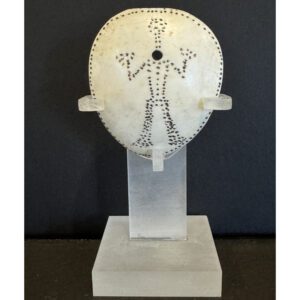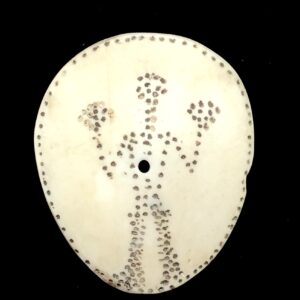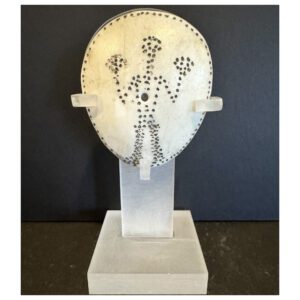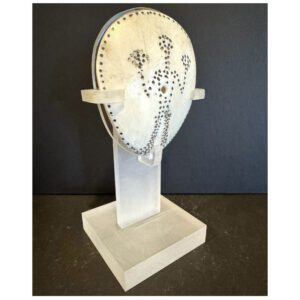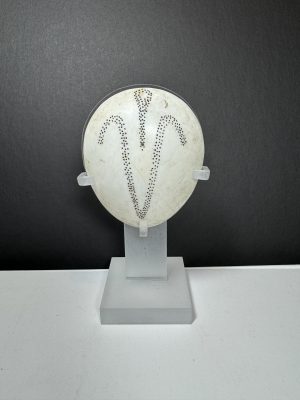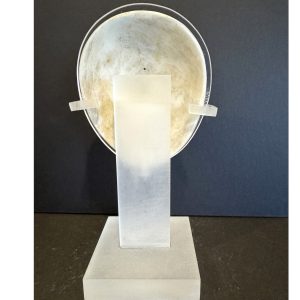-
Sale!


$295.00 Original price was: $295.00.$260.00Current price is: $260.00.
H: 4.6″ W:2.5 ” D: 2.12 ” | FREE SHIPPING WITHIN CONTINENTAL U.S.
Made by the Naga, tribal ethnic groups in India, conch shell ear covers were worn by warriors attached to pierced ears through a hole in the shell. Stippled abstract images of standing male with raised arms as status sign, mounted on Lucite base and is a fascinating piece of cultural art.
-
Sale!


$295.00 Original price was: $295.00.$260.00Current price is: $260.00.
H: 4.6″ W:2.5 ” D: 2.12 ” | FREE SHIPPING WITHIN CONTINENTAL U.S.
Made by the Naga, tribal ethnic groups in India, shell ear covers like this with stippled abstract image of standing male with raised arms were worn by warriors as status symbols.
-
Sale!


$325.00 Original price was: $325.00.$285.00Current price is: $285.00.
H: 5.25″ W:3.75 ” D: 2 ” | FREE SHIPPING WITHIN CONTINENTAL U.S.
Made by the Naga, a collection of tribal groups in India with a past headhunting tradition, conch shell ear covers are worn by warriors. This has a stippled image of a buffalo’s neck and head inside V-shaped horns, a symbol of wealth, prosperity. On Lucite base, they are unique cultural art.
End of content
End of content

